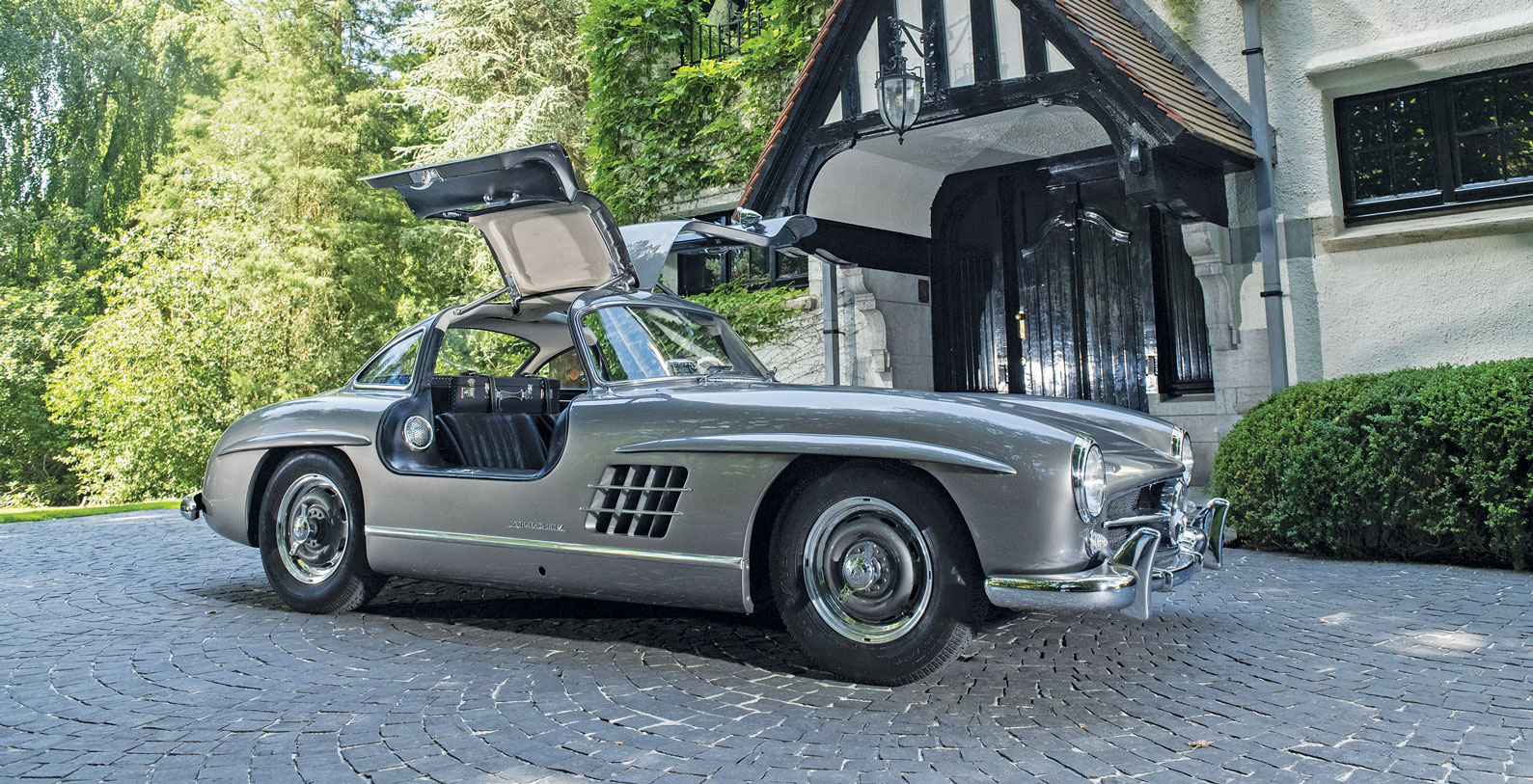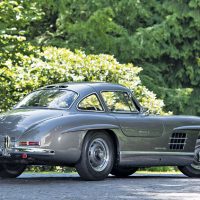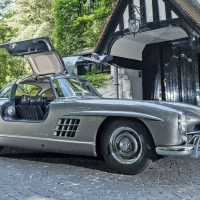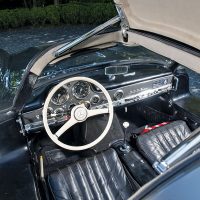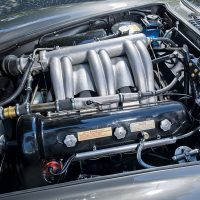SCM Analysis
Detailing
| Vehicle: | 1955 Mercedes-Benz 300SL Gullwing |
| Years Produced: | 1954–57 |
| Number Produced: | 1,400 |
| Tune Up Cost: | $1,000 |
| Chassis Number Location: | Plate on firewall, stamping and plate on chassis frame near left front suspension mount |
| Engine Number Location: | Stamping and plate on block, right hand side at the front of the engine |
| Club Info: | The Gullwing Group |
| Website: | http://www.gullwinggroup.org |
| Alternatives: | 1962–64 Ferrari 250 GT Lusso, 1958-63 Aston Martin DB4, 1957–63 Mercedes-Benz 300 SL Roadster |
| Investment Grade: | A |
This car, Lot 663, sold for $1,620,329 (€1,416,000), including buyer’s premium, at Artcurial’s Monaco sale on July 21, 2020.
No better case study for understanding the value of Gullwings has presented itself in recent years. The 300SL is often used as a barometer of the market and therefore, perhaps unknowingly, gets perceived as a commodity. Like-kind is a term that should be used only loosely with Gullwings. This example highlights that specification is important, but condition is everything.
What’s the deal with wheels?
To start, according to 300SL historian Eric LeMoine, just 210 Gullwings were originally delivered with Rudge wheels and an NSL motor.
Rudge wheels have become as iconic and desirable as the Gullwing itself, and oftentimes collectors will hold out for an original Rudge-wheel car or nothing else. For perspective, a complete set of original Rudge wheels with all the hardware is worth well in excess of $100,000 today. Good reproductions can cost roughly half that. So, the value-add to any car with an original set fitted is going to be at least six figures. For an example as genuine as this one, the premium could be $200k.
The NSL engine is a bit trickier to quantify. Fewer people know of the option, and it was far less commonly supplied on Gullwings than Rudge wheels. Regardless, a “performance package” has never detracted from the value of a car, and in this case, I would estimate the option adds another 10%–15%.
Red missed
Perhaps the most interesting point this car makes about original specification, however, is in regard to color. Red is the second-most-common color for a Gullwing, after silver, but it is commonly regarded as the least desirable. One could argue that this car probably never should have been repainted, but the general rule of thumb for 300SLs is that if the current color is a correct one and well-liked, then the color change is a non-issue.
More important than factory specification, however, is how this or any Gullwing has fared over the past 65 years. These cars tended to be well used in-period, and we can assume that many fitted with Rudge wheels and NSL motors were spec’ed that way for competition. Notably, there are far more Gullwings in restored condition today than not.
Setting the market straight
The past decade has amplified two common misconceptions about the 300SL market. First is that a nice example is always available. And second, that Gullwings and Roadsters are, for all intents and purposes, the same.
On the contrary, most Gullwings are simply average, and a low-mileage, unrestored Gullwing is exceedingly uncommon. Even exceptionally well-restored cars can be hard to come by. This misconception is exacerbated by thinking that the prevalence of Roadsters on the market correlates to Gullwings, but that is not so. One might find 10 or more Roadsters in nice, unrestored condition before coming across a similar such Gullwing.
Condition, therefore, is likely the defining feature in this “above market” result. With limited ownership, low mileage and overall originality, this is a particularly rare car. Couple that with the desirable original specification, and you could say that this is likely one of the best unrestored Gullwings to come to market in quite some time.
An upward trajectory
What I hope we can appreciate most about this result, particularly to those of you grousing, “But it had a color change,” is that a great unrestored car doesn’t have to be perfectly preserved or entirely original. This example was by no means perfect, but it was more than just your average Gullwing. Undoubtedly, the best part of a car like this is the way it drives.
Leading up to this sale, auction results showed a declining median value for Gullwings. Those data points, however, didn’t reflect some private sales of more desirable examples, nor did they account for the generally lower quality of car that’s recently been found at public auction. That said, this result does reflect an uptick in Gullwing values of late, one that likely will break the perception of a downward-trending 300SL market.
I’m sure both the consignor and the auction house feel this car was well sold. The data suggests the same. This was a “car guy’s car” and it brought a deserving premium. The underbidder will have to look hard to find another on the market of equal quality. ♦
(Introductory description courtesy of Artcurial Motorcars.)
